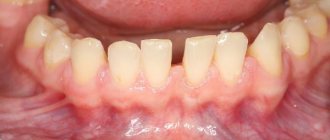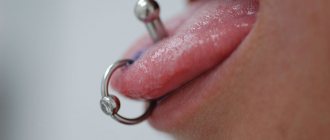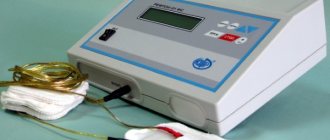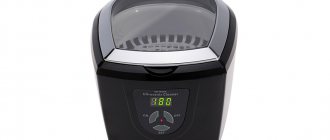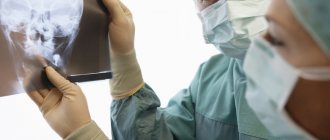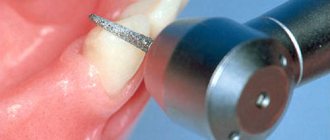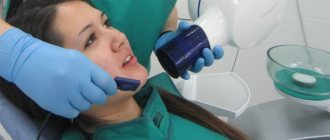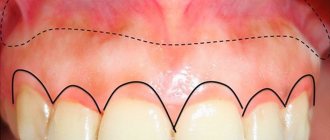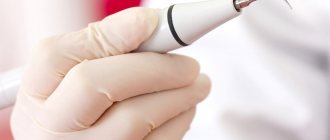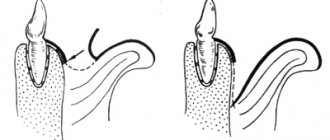Vestibuloplasty is a surgical method of correction of the oral cavity, in which, as a result of the redistribution of soft and mucous tissues, the space between the lip and the dentition deepens. The main purpose of such an operative procedure is to shift the internal contours of the mouth and the gum attachment zone, reducing and completely eliminating ischemia and excessive tension of the soft tissues and attached mucous surface of the gums, and improving blood circulation.
When should you consider vestibuloplasty?
Vestibuloplasty effectively alleviates the patient’s condition; you can resort to it by:
- cosmetic indications: pronounced aesthetic disturbances and cosmetic defects of the face caused by the small vestibule of the oral cavity;
- bite correction;
- increased tone of the mental muscles;
- correction and preparation of orthodontic mucous tissues before extensive treatment, prosthetics, implantation;
- disturbance of sound production and complicated phonation of some sounds due to the small oral vestibule;
Rehabilitation
For six hours after surgery, the patient applies an ice compress to the injured area. This procedure is performed at intervals of twenty minutes, the compress is kept for the same period of time.
In the first four to six days, you must follow a diet: avoid too spicy, sour or salty foods, and solid foods. Food should be moderately warm; hot drinks or foods are prohibited.
In the first four days, you should not use toothpaste; you can remove plaque from the surface of your teeth with a soft, damp brush. The patient should rinse his mouth regularly using mild antiseptic solutions. Once the fibrin film has formed, the paste can be used.
For the first month after surgery, oral gymnastics and light self-massage of the skin in the intervention area are recommended. Such procedures will speed up recovery.
When is vestibuloplasty contraindicated?
In some clinical conditions there are a number of contraindications for this surgical intervention:
- complicated, multiple dental caries;
- pathologies of blood and hematopoiesis (leukemia, hemophilia), blood cancer;
- tendency to form keloid scars, collagenosis;
- maxillofacial osteomyelitis with destructive changes in bone tissue;
- recent radiation exposure to the cervical region and head;
- often recurrent chronic inflammation of the oral mucosa;
- the presence of malignant neoplasms;
- severe cases of diabetes;
- dysmorphophobia;
- cerebral vascular lesions;
- the patient has mental disorders, alcohol and drug addiction.
Indications and contraindications for vestibuloplasty
Recommendations for the operation:
- Periodontal diseases. Surgery eliminates pain, inflammation, and also accelerates healing.
- Unclear speech pronunciation. In situations involving speech defects, surgery is prescribed by a speech therapist.
- Orthodontic and orthopedic treatment. Vestibuloplasty is prescribed during the preparation of the roots of teeth and gums before prosthetic and implantation procedures. They are also referred for surgery when installing braces.
- Correction of cosmetic defects.
- Mandibular vestibuloplasty is often prescribed as a preventive measure against exposure of tooth roots (gum recession).
Conditions in which surgery is not recommended:
- Caries and any dental diseases.
- Alcohol and drug addiction.
- Oncological diseases.
- Blood diseases.
- Collagenosis.
Types of mandibular vestibuloplasty surgery
Modern medicine is developing in this direction and can offer several methods for getting rid of oral defects. All methods of performing the operation bear the names of the doctors who first put them into practice. The step-by-step algorithm for the operation of all types of vestibuloplasty is similar.
Stages of correction of the small vestibule of the mouth:
- Conducting local anesthesia.
- Dissection of the mucosa with surgical scissors followed by peeling.
- Displacement of the necessary internal muscles with accompanying screening of single fibers.
- Subsequent fixation of tissues and their protection.
Vestibuloplasty in Moscow is widely used, and for each patient an appropriate method of surgical intervention is individually selected:
- According to Clark. This type of correction is suitable for the upper jaw and covers a large area of the oral cavity. During the operation, a horizontal incision is made parallel to the supramaxillary bone, peeling away the mucous membrane of the inner part of the lip. The mucosal flap is sutured to the periosteum at the required depth.
- According to Adlan-Meicher. It is used only when lower jaw vestibuloplasty is necessary. In this case, an incision is made along the jaw line. The flap of detached mucosa is fixed at the required depth. The result is reliable, however, the wound surface is the inside of the lip.
- According to Schmidt. This surgical method differs from the previous one only in that the dissection takes place not along the line of the periosteum, but along the muscle cords.
- According to Glickman. An incision is made at the junction of the lip, suturing it with the vestibule of the oral cavity.
- Tunnel vestibuloplasty. A central vertical incision and two diagonal ones are made at the level of the canines (premolars), after which a submucosal tunnel is formed.
Preparation and performance of the operation
Proper preparation will make going to the doctor less worrying and uncomfortable. In order for the operation to take place without consequences and complications, you need to follow simple recommendations.
Rules for preparing for vestibuloplasty:
- Thoroughly clean your mouth with a soft toothbrush and toothpaste.
- Do not eat solid food 6 hours before the procedure.
- Do not take sedatives, painkillers or other medications not prescribed by a doctor.
- Tell your doctor about any medications you take. This should be done no later than the examination before surgery.
- It is better to calm down unnecessary worries before starting the appointment, and it is better to talk about any worries and fears with your doctor.
A procedure such as vestibuloplasty in Moscow takes about an hour of your time. Having decided on the method of correction, the doctor administers anesthesia and carries out the necessary actions. At the end of the procedure, the patient is given a cold compress on the operated area. It can be kept for several hours with breaks of 20 minutes. This helps reduce the primary pain symptom. After this, the patient is given recommendations on how to cope with pain during rehabilitation.
Rehabilitation period
Rehabilitation lasts from 7 to 14 days. Pain, numbness and discomfort are common symptoms that may accompany the patient during this period. However, the healing process can be assisted.
It is worth taking note of the following recommendations:
- Get by with light brushing of your teeth without toothpaste and rinsing with an antiseptic.
- Consume only liquid dietary products.
- Avoid hot and spicy foods that irritate the mucous membranes.
- Avoid alcohol and dairy drinks.
- Visit your doctor regularly.
- Perform special exercises for the oral cavity prescribed by the dentist.
Possible complications
The period of complete restoration of sensitivity can last up to 9 months and this is normal. Minor complications after surgery can arise due to insufficient care or by chance. But, as a rule, they are easily resolved.
Swelling after surgery goes away on its own within a few days. Bleeding may occur, which can be controlled by taking hemostatic agents. Scars, scars and fistulas are quite rare complications. If they occur, you should contact a surgeon.
Reviews
Patients who have undergone vestibuloplasty report painful sensations of varying severity in the first days of rehabilitation. The severity of the pain varies depending on the type of operation performed, as well as the quality of its execution.
Among specialists with a long track record, Dr. K. B. Reshtovskaya has the largest number of positive reviews. The doctor’s high professionalism and full support of patients are noted, starting from the initial consultation and ending with full rehabilitation.
Vestibuloplasty price in Moscow
The cost of such a service is directly determined by the doctor during the consultation. The pricing policy is influenced by the method of conducting the operation. With a simple correction, the price is quite low. The most expensive treatment method is laser vestibuloplasty. The price in Moscow for this procedure can reach 10,000 rubles and more. The price range is greatly influenced by the level of qualifications of the specialist. Among specialists of a similar level, the most affordable prices are found at the dentist K.B. Reshtovskaya.
| Name of service | Price |
| Vestibuloplasty | 20,000 rub. |
Preparing for surgery
To successfully undergo direct surgical intervention, dentists recommend following the following rules:
- undergo preliminary x-ray diagnostics of the operated cavity;
- Do not use any medications, especially painkillers. If you need to constantly take any medications, indicate this to the doctor performing the operation;
- solid food is excluded 8-10 hours before surgery;
- it is necessary to perform proper hygiene procedures to remove accumulated plaque;
- Before surgery, check with your doctor about any concerns you may have. This will help get rid of excessive anxiety and fear, and will allow you to have a positive psychological attitude towards the operation. In this case, the period of rehabilitation and recovery will take place in the shortest possible time, with minimal discomfort.
Preparation and other important features
In order for surgery on the tissues of the mandibular bone to be effective and with minimal complications, it is important to pay attention to the preparatory period. Before vestibuloplasty it is recommended:
- sanitize the oral cavity;
- carry out ultrasonic cleaning of enamel and periodontal pockets;
- Avoid smoking and alcohol three days before and after the expected date of surgery.
In addition to examining the oral cavity, assessing the importance and indications for vestibuloplasty, the doctor studies the hereditary, clinical and allergic history. It is important to tell your doctor about your current illnesses and drug treatment. If necessary, consultation with a doctor in the relevant field may be required. Vestibuloplasty is carried out in several main stages:
- Administration of anesthesia for pain relief. The drug is selected individually in accordance with the allergic history. Modern drugs are characterized by minimal aggression on the body and a low risk of allergic reactions.
- Performing vestibuloplasty according to the chosen method and surgical protocol. The total intervention time, regardless of the method of operation, does not exceed an hour.
- Upon completion of the operation, it is necessary to apply ice, apply lotions and rinses with chamomile decoction to constrict blood vessels and relieve tension.
Swelling and pain after vestibuloplasty are normal, but require attention. If pain increases and symptoms of an infectious-inflammatory process occur, you should consult a doctor.
Typically, vestibuloplasty does not cause difficulties or discomfort to patients. If you follow medical recommendations and oral hygiene, complications occur extremely rarely.
Vestibuloplasty is a routine surgical intervention in dentistry to eliminate a defect in the small vestibule of the oral cavity. This pathology is acquired or congenital and requires mandatory correction. The defect provokes tension in the gums under the incisors, which can be noticeable to others with a wide smile, as well as excessive mobility of the chin when swallowing water and food. When eating, the gums are constantly damaged, leading to circulatory disorders.
Main stages of vestibuloplasty surgery
Vestibuloplasty is usually performed under local infiltration anesthesia. In children and in severe cases, inhalation or intravenous general anesthesia may be used.
Stage 1. Aseptic treatment of the operated cavity.
Stage 2. Dissection, cutting the space into the depth of the mucous membrane, between the movable part of the jaw and the gums. Depending on the required results, it can be produced using various methods, which will be discussed below.
Stage 3. Peel off the inner surface of the lip using special scissors. At the same time, along the periosteum, submucosal tissues (muscle, fat, tendons) are carefully moved deeper into the frontal and lateral sections. If necessary, dental papillae (cords) are excised with a scalpel.
Stage 4. The necessary positioning of the detached flap is performed. In this case, the exfoliated tissue is moved to the desired location and evenly distributed throughout the entire depth of the newly formed vestibule. An important point is that it is necessary to completely remove fibrous and muscle fibers from both the periosteum and the detached flap.
Stage 5. Fixation of the mucosal flap with ligature threads to the periosteum.
Stage 6. Applying a special aseptic, dental, forming dressing to the wound surface to form a protective fibrin film that will protect it until complete healing. A pressure bandage is applied to the lip and chin area.
Stages of implementation and rehabilitation after vestibuloplasty
The procedure is performed under anesthesia. As a rule, infiltration (freezing injection) is sufficient, but if desired, general anesthesia or xenon sedation can be used. Afterwards, the gums are treated with an antiseptic, all necessary surgical procedures are performed, sutures and regenerating bandages are applied.
In the first 3 days after surgery, you should not brush your teeth or actively rinse your mouth. It is recommended to take baths with herbal decoction or antiseptic solution. If necessary, the doctor prescribes antibiotics.
Our dental clinic performs correction of the oral vestibule for adults and children. The price for vestibuloplasty depends on the location (upper or lower jaw). Details can be found by phone.
Methods of mucosal dissection during vestibuloplasty
Clark's method
Vestibuloplasty according to Clark is an open method of vestibuloplasty and is the optimal solution for correcting the upper jaw. Its exceptional feature is that dissection can be performed over large areas of the oral vestibule without affecting the periosteal tissue. The incision is made to the depth of the oral mucosa along the transitional fold between the mucosa and the gums. The complex of submucosal tissues is moved along the periosteum line to a new depth, in the lateral section - 6-7 mm, in the frontal section - 10 mm. After the operation, a dental forming plate is applied, special attention is paid to the alveolar process, and it is covered with a special film. The period for complete healing is 15-20 days after surgery.
Tunnel vestibuloplasty
This method belongs to the closed methods of vestibuloplasty, is minimally traumatic (often used to eliminate dental problems in children) and can be used to correct both jaws. After infiltration anesthesia, dissection of the mucous membrane is performed, with 3 limited, small incisions made - in a vertical plane 20-25 mm long along the frenulum, along its entire length (from the place of attachment to the lip to the place of attachment to the gum) and two incisions in horizontal plane, along the connecting fold, towards the premolars with a length of about 20 mm. Through these incisions the mucous membranes are manipulated. Healing of the postoperative defect occurs quite quickly - 9-12 days from the date of surgery.
Edlan Meicher method
Most often used for correction of the lower jaw over the entire mucosal area. Local infiltration anesthesia is carried out using the hydropreparation method for better detachment of the mucosal flap. The mucosal surface is dissected along an arc parallel to the jaw line. At the same time, 10-12 mm recede from the gingival border of both canines; in the area of premolars and molars, 7-10 mm recede. Due to the positive dynamics and sustainable results, this method is widely practiced for vestibuloplasty and has a healing period of up to 2 weeks.
Glickman method
This vestibuloplasty is suitable for both local, small areas and relatively large areas. The dissection is made at the site of attachment of the lip, followed by detachment of soft tissue to a depth of 15 mm. The free edge of the resulting mucosal flap is sutured, offset, to the formed depression.
Schmidt technique
This technique involves, after an incision, detaching only the mucosal surface, while the periosteal tissue is not separated. The edge of the mucosal flap is immersed to the required depth of the cavity of the oral vestibule, and then sutured. A dental shaping bandage is applied to the operated areas, and a special pressure bandage is placed on the chin.
Limberg method
With this technique, 2 triangular opposing flaps of the lower lip are formed. The main dissection is along the crest of the frenulum, at the point of its attachment to the alveolar process. Next, two additional incisions are made: one at an angle of 70° from the main incision along the alveolar process, the other at an angle of 80° from the main incision along the mucous membrane of the lip. The length of the incisions in children is 0.5-2 cm, in adults - 2.5-3 cm. After gentle separation of tissue, the mucosal flaps are mutually moved and stitched with catgut.
How the operation is performed: methods
There are several techniques for performing vestibuloplasty. All types of correction are done under local anesthesia
and are designed for minimal tissue trauma. Among the options that are most often used in medical practice, we note the following:
- Least traumatic - tunnelplasty
, so it is recommended for children. As part of this intervention, the doctor makes three small incisions and shapes tissue through them. This type is performed on both jaws. - The option that is most often used on the upper jaw
, over a significant area - the doctor makes an incision in the area where the gums and the moving part of the mucous membrane meet, forms the required depth of the vestibule, and applies sutures. - Vestibuloplasty lower jaw
it is often carried out using a more complex method: an arcuate incision separates the mucous membrane, the tissues are displaced, and their excess is removed, thereby creating the required depth. The flap is fixed with sutures.
During the treatment process, the doctor can use both a traditional scalpel and a laser. Laser surgery
less traumatic, more accurate, virtually eliminates bleeding and infection (the laser immediately “seals” the vessels and kills sources of infection), the patient is not bothered by possible swelling, and the tissues heal faster. However, the cost of such interventions is higher due to the use of more complex equipment.
Using a laser for vestibuloplasty
Vestibuloplasty using laser technologies is the most promising, innovative, minimally invasive surgical intervention. Using a laser, you can clearly predict the timing and results of plastic surgery, and clearly organize the entire treatment process.
Advantages of using laser in surgery:
- minimal impact on the nerve endings of the cut tissues, little pain;
- rapid postoperative tissue regeneration;
- precise and non-bleeding incision;
- burns of surrounding tissues are excluded, hypersensitivity of tooth enamel is not caused;
- prevention of disturbances in microcirculation processes;
- improved marginal fit of contacting surfaces;
- the possibility of infection of the operated tissues is excluded;
- destruction of pathological microflora, exclusion of purulent-destructive inflammatory processes;
- stimulation of tissue regeneration, absence of scar growths.
For vestibuloplasty, the following types of lasers are used:
- neodymium Nd:YAG laser - with good absorption in pigmented tissues (hemoglabin, melanin). Capable of cutting surfaces in continuous and pulse modes. The radiation is supplied via a flexible light guide;
- argon - with high speed and degree of polymerization of light-curing materials. When used, bleeding is effectively prevented and almost completely stopped;
- diode semiconductor laser - with good hemostatic effect and absorption by pigmented tissues. It has compact overall dimensions, is easily applicable in clinical settings, and has an effect that stimulates tissue regeneration.
Tunnel method
In this case, the specialist makes not one large and deep incision parallel to the curve of the jaw bone, but several small incisions in different places - most often there are three. Thanks to this approach, the procedure is considered the least traumatic and minimally invasive, and involves rapid healing of wound surfaces. The method can be used to correct a defect in any jaw. And due to minimal trauma, it is often performed on children.
This is what tunnel vestibuloplasty looks like
Interesting!
As studies show1, it was the operations performed by the tunnel method that patients tolerated most easily.
They, compared to those for whom the procedure was performed in a different way, only in 40% of cases complained of pain and swelling of the tissues during the rehabilitation period. While with four other techniques, complaints were received in 100% of all cases, and tissue healing took an average of 3-7 days longer. Any of the listed types of vestibuloplasty can be performed either using a conventional scalpel or using laser equipment. The second option is more preferable, as it allows you to minimize any surgical and postoperative complications. The use of a laser also contributes to excellent sterilization of tissues, their rapid regeneration and healing: targeted impact during the procedure helps make it virtually painless.
The effectiveness of lasers today has been confirmed by many successful operations both in the field of treatment of teeth and gums, and in the field of dental restoration using laser implantation.
Laser is one of the safest instruments for surgery today.
Rehabilitation activities
Depending on individual characteristics, patients after vestibuloplasty may experience numbness and loss of sensitivity of the oral mucosa, swelling, and discomfort when speaking. During the rehabilitation period, you can get rid of these manifestations by doing the following:
- rinse your mouth with a doctor-recommended mouthwash after each meal. Light brushing of teeth with a soft brush on the 4-5th day after surgery;
- following special dietary recommendations. The main diet should consist of pureed, soft dishes, purees. Alcohol, spicy, sour, hot and solid foods, dairy products are prohibited (they can provoke the formation of unnecessary bacteria)
- simple, regular, restorative exercises: external, light massage of the skin covering the operated area, touching the area of the vestibule of the mouth with the tip of the tongue, periodically pouting the lips for at least 2 minutes/up to 5 times a day;
- Regular visits to the doctor to monitor recovery and regenerative processes. Clinical control 3.6 months after the intervention.
Rehabilitation period
As with any surgery, there is a recovery period required after this operation. Its duration depends on the chosen technique and volume of intervention, the rate of tissue healing in the patient, etc. One of the important factors is how carefully the patient followed the doctor’s recommendations. Typically, the rehabilitation phase lasts about two weeks or a little more. At this time, the patient needs:
- , limit physical activity
during the recovery period ; - take care of the oral cavity
according to the doctor’s instructions, in particular, use disinfectants and healing agents; - in the first couple of days, refrain from brushing
your teeth, and then brush gently with a soft brush; - During the healing period, exclude
too hard, hot, cold, spicy, sour and other foods that will irritate the damaged mucous membrane.
If you are interested in laser vestibuloplasty in Moscow and the region, contact the NovaDent clinic. We also perform traditional interventions using scalpels. Regardless of the type of operation, you can be confident in the highest quality of our work. Our staff consists of experienced surgeons (the average doctor's experience is 13 years), who select the most effective technique for each patient. In addition, we take care of the patient’s psychological comfort, answer all questions in detail, and advise on the procedure itself and subsequent rehabilitation.
Expert of the article you are reading: Anna Aleksandrovna Tarasova Chief physician, implantologist, surgeon, periodontist, leading specialist of the NovaDent network
17 years
Clinical experience
Bratislavskaya
Moscow, Bratislavskaya 6
+7
Free consultation with this specialist
How to treat emerging complications
Ignoring rehabilitation recommendations can lead to the occurrence of certain pathologies, namely:
- severe bleeding. To eliminate it, you should use hemostatic tablets, make cold applications with liquids for better blood clotting;
- the appearance of ligature fistulas. May be caused by individual intolerance to suture material. In this case, you should consult a doctor to prescribe healing medications;
- excessive swelling. It may be an individual feature; as a rule, it completely disappears within 3-5 days from the date of surgery;
- loss of sensation in the operated area. The norm is that the period of complete restoration of sensitivity can range from six months to 9 months. Physiotherapy (hydromassage, paraffin baths) and rehabilitation exercises help speed up the process.
Sources used:
- Surgical dentistry: Textbook for medical dental institutes / A. I. Evdokimov, I. G. Lukomsky, I. M. Starobinsky; With the participation of Associate Professor G. A. Vasiliev and Professor M. B. Fabrikant. - M.: Medgiz, 1950.
- National Library of Medicine (USA)
- “Outpatient surgical dentistry” (Bezrukov V.)
- “Propaedeutics of surgical dentistry” (Soloviev M.)
Vestibuloplasty with laser in Krasnodar
Few dental clinics in Krasnodar use laser equipment to perform vestibuloplasty. At the Symmetry Dentistry and Cosmetology Clinic, safe and modern Doctor Smile D5 laser equipment is used to perform this operation.
This allows you to significantly reduce the amount of invasive intervention and carry out the procedure without pain, blood and discomfort. A high-precision laser device makes it possible to remove all affected tissue, and a special attachment provides an anesthetic effect, which almost always allows you to do without additional anesthesia.
Laser vestibuloplasty at the Symmetry clinic is a guarantee of highly accurate, painless and absolutely safe treatment of gum pathology. You can find out more about the operation by contacting us in any way convenient for you: by phone, or by using the feedback form. The cost of laser vestibuloplasty in Krasnodar is indicated in the Cost of Services section.
